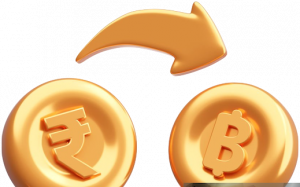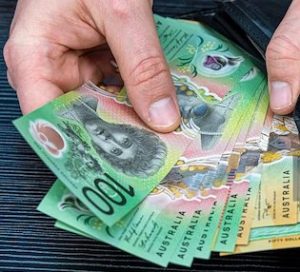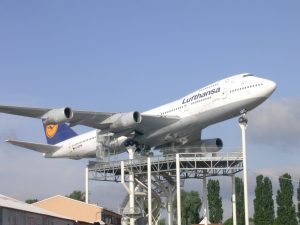Pound to Rs Exchange Drives
 The pound to rs rate affects travel, shopping, and money transfers. Many follow this rate daily. It moves due to demand, news, or policies. A strong pound gives more rupees. A weak pound reduces value. Therefore, it helps to know how and why the rate changes every day.
The pound to rs rate affects travel, shopping, and money transfers. Many follow this rate daily. It moves due to demand, news, or policies. A strong pound gives more rupees. A weak pound reduces value. Therefore, it helps to know how and why the rate changes every day.
How the pound to Rs Rate starts changing
The pound to RS rate starts changing as soon as markets open. Currency demand increases or falls with news, inflation, and trade. Every move shapes buying power. If the UK releases strong data, the pound rises. When India sees strong exports, the rupee gets stronger. These moves cause daily shifts.
Tourism and currency demand rise together
Travel brings currency demand. More tourists from the UK bring more pounds. As a result, demand for pounds rises in India. More demand means a stronger pound. If Indian tourists go to London, they need pounds. Demand then shifts, pulling the exchange rate in a new direction.
Holiday seasons drive large conversions
Travel peaks push people to convert pounds into rupees. This usually happens during school holidays. UK families fly to India. Money changes hands in large amounts. Therefore, the exchange counters run busy. High demand for rupees may then lower the pound to rs rate at that time.
Retail spending drives further exchange flows
Spending rises in holidays. People carry pounds and spend in India. In return, rupees move into banks and vendors. Those rupees often go back into foreign exchange. That pushes more pressure on conversions. Each spend adds to the flow. Over time, this builds movement in the rate.
Remittances shape the value path
Many workers send money from the UK to India. Their remittances rely on the rate. A stronger pound gives more rupees. As a result, families wait for good days. When rates peak, remittances rise. This process then moves the pound to rs rate further with each transfer.
Market events drive sharp swings
Some events shake the market. A political change in the UK can move the pound. Rupee shifts follow elections or inflation data. These events often bring short spikes. Traders act fast. That drives movement quickly. A small news story can make the rate climb or fall in minutes.
Bank policies affect the exchange chain
The Bank of England and Reserve Bank of India both move rates. A rate hike in the UK can raise the pound. Lower interest in India can weaken the rupee. As banks act, exchange rates shift. Each meeting adds risk. People then watch for rate changes before trading.
Online platforms push fast changes
Many trade currency online. These platforms track news and supply real-time data. As rates move, alerts are sent. That helps people act faster. With each trade, the rate shifts again. Technology helps amplify every change. Over time, this makes the pound to rs rate move quicker than before.
Import costs shift with the rate
Imports from the UK cost more or less by the day. A strong pound means higher bills. A weak pound means lower import prices. Shops then adjust their prices. As trade shifts, the rate follows. Over long months, these trends shape both inflation and the exchange flows.
Exports benefit from a weak pound
When the pound weakens, Indian goods seem cheaper. Exporters enjoy stronger sales. More sales mean more pounds come in. Those pounds are changed into rupees. This conversion affects the rate. With more inflow, the rupee grows stronger. The circle continues as exporters increase shipments abroad.
Stock markets also impact currency
The stock markets in London and Mumbai affect the pound to rs. A rising FTSE boosts the pound. A strong Sensex boosts the rupee. Investors move cash across borders. Their trades shape the currency flow. A single market crash can send rates moving fast.
Gold and oil prices steer currency direction
Oil imports affect India deeply. When oil prices rise, rupee demand falls. That weakens the rupee. At the same time, gold prices pull on both currencies. UK’s gold demand may boost the pound. Indian demand may weaken the rupee. Both commodities help move the exchange.
Festival shopping raises currency demand
Indian festivals see a rise in spending. Relatives abroad send pounds for shopping. As more money flows in, currency demand rises. Pounds get changed to rupees. That brings short upward pressure. Many shops also change currency to import goods. The rate moves with every sale.
Educational flows add to exchange volumes
Students from India go to the UK. They convert rupees to pounds. This raises pound demand. At the same time, UK students in India create rupee demand. These two flows create steady pressure. During admissions, the pound to rs rate sees quick upward movements.
Wedding season adds sharp spikes
Indian weddings often pull foreign exchange. UK-based families attend and spend pounds. Currency demand surges. Pounds enter banks, shops, and planners. That triggers large-scale conversions. Every wedding season sees exchange counters busier than usual. This spending wave moves the rate sharply.
Real estate and investment transfers matter
Many NRIs invest in Indian property. They send pounds to India. These large transfers move the market. If property sales rise, the rupee grows. A fall in sales weakens the rupee. As investments increase, pounds flow into Indian banks, changing the balance again.
Banks offer varying exchange margins
Exchange rates differ at each bank. Some offer better deals than others. Even small margin changes move large sums. People compare rates before exchanging. This shopping around affects the pound to rs demand chain. Over time, banks adjust their offers to win customers.
Holiday spikes shape travel budgets
The pound to rs rate matters during travel planning. A strong pound gives travelers more rupees. A weak pound makes trips costly. Many change their plans based on the rate. Some delay their bookings. Others buy currency in advance. These changes shape flight and hotel bookings.
Timing affects exchange gains
The time of exchange matters. A strong rate gives more rupees per pound. Early conversion helps secure better deals. Delays may cause losses. Currency buyers track the market closely. Some use apps to find peak moments. Traders also sell at high points for gain.
News cycles build quick surges
Daily news can push the pound up or down. A UK trade deal or budget may raise the pound. A drop in Indian output may lower the rupee. These fast updates drive spikes. Travelers and traders both watch headlines. Each new story moves the needle.
Festive sales boost pound to Rs traffic
Retail events like Black Friday and Diwali boost spending. Buyers move pounds to India to shop. Online sales attract NRIs. More pounds are exchanged. That volume builds exchange rate pressure. In these periods, sharp gains or losses happen in a few hours.
Mobile transfers grow every year
Apps make it easy to send pounds to India. As usage grows, so do transfers. Every mobile app adds users. Those users drive up transaction volumes. More volume leads to faster rate changes. Instant trades mean quicker reaction to price swings.
Events like Brexit cause big moves
Large policy changes like Brexit move the pound. Currency markets react sharply. Indian rupee follows that direction. Traders move fast to avoid risk. Sudden drops or rises occur. Events like this shape long-term currency direction. Each change builds into the pound to rs trendline.
Trade deficits pull currency back
India’s trade deficit lowers the rupee value. More imports than exports create pressure. This shift weakens the rupee. The pound then grows stronger. The cycle repeats monthly. As trade numbers release, the exchange adjusts. Buyers and sellers prepare for swings around these reports.
Real-time updates help travellers save
Currency apps update the pound to rs rate constantly. These alerts guide travelers. When the rate climbs, users act. They lock better deals. That stops losses. With each alert, behavior changes. Exchange companies also change offers based on this data.
Smart spending moves currency demand
Planned spending helps users make the most of their pounds. People use travel cards or pre-paid options. That eases the currency burden. Bulk exchanges lower cost. As more people follow such steps, the volume shifts. This adds movement to the pound to rs trend.
Strong rupee may slow travel inflow
If the rupee grows stronger, fewer pounds are needed. This may reduce UK tourist numbers. Fewer travelers bring less demand. That weakens the pound further. Exchange houses then cut prices. This leads to short-term dips in the pound to rs.
Hotels and airlines react to exchange trends
Hotels and airlines price based on exchange changes. A weak pound may lower bookings. A strong pound boosts bookings. Pricing shifts by the day. When the rate favors travelers, bookings spike. As it drops, deals are cut to attract buyers.
Everyday shoppers shape currency use
Many NRIs send pounds to families for shopping. This affects local stores and vendors. Currency demand shifts daily. Every buyer adds to the movement. This builds into the monthly exchange patterns. These habits slowly build the bigger exchange story.
Changing pattern with every year
Each year brings new patterns in the pound to rs rate. Market changes, spending, and policies alter trends. Travelers adapt quickly. Traders find new entry points. The cycle evolves daily. These trends help paint the currency’s direction for months ahead.
Travel trigger
The pound to rs continues to shape global travel. Each shift affects holidays, shopping, and transfers. As rates move, plans adjust. Those who act early often gain more. The rate reflects many flows at once. Each holiday season adds energy to this moving value.









